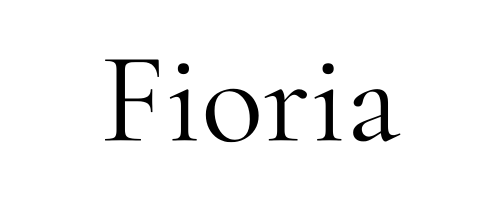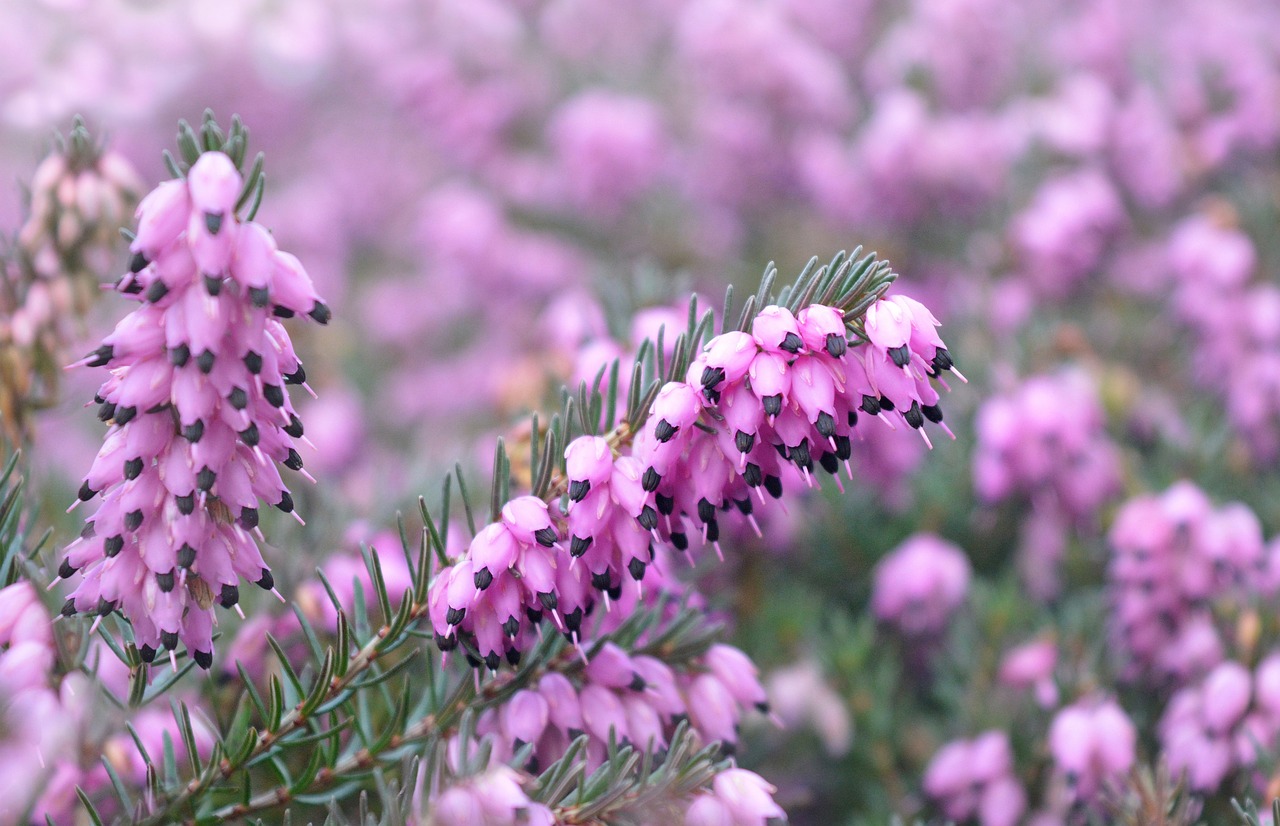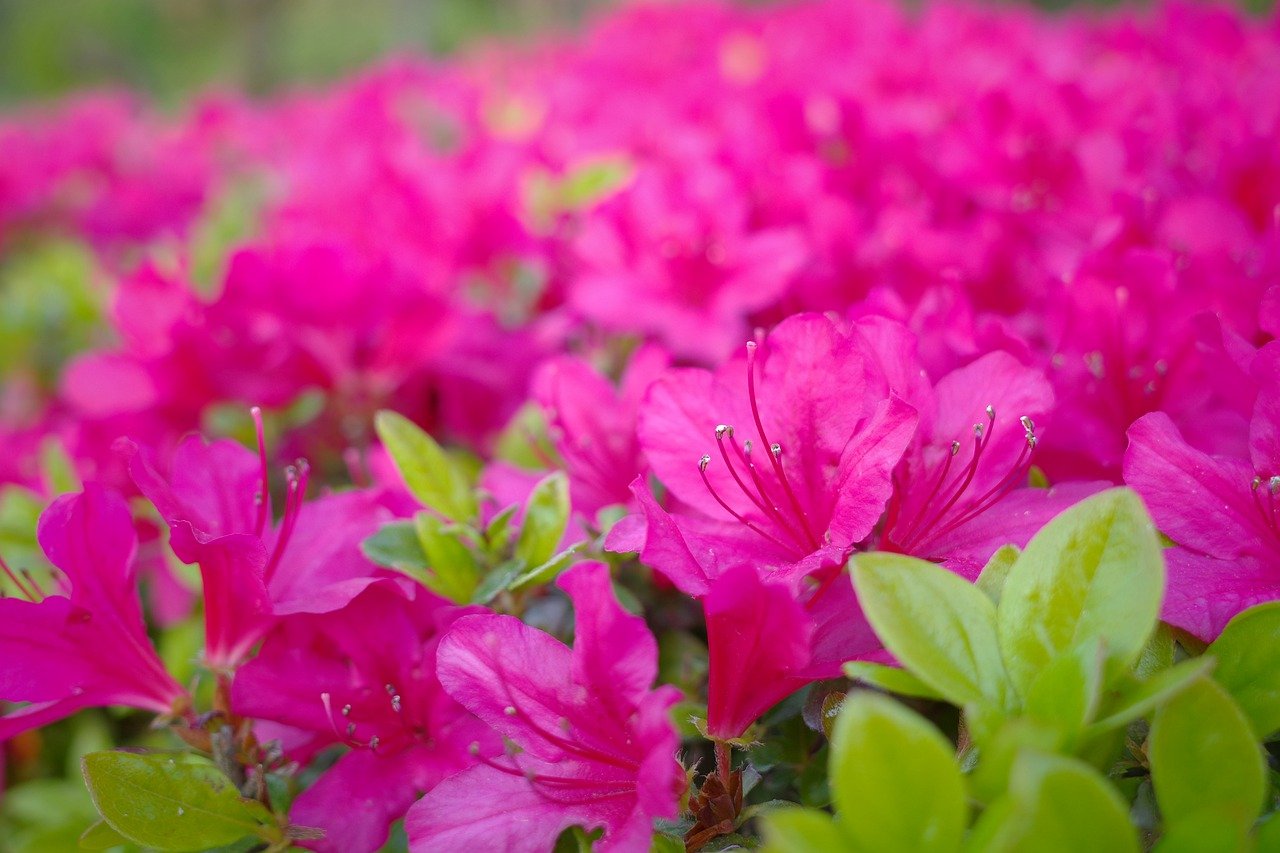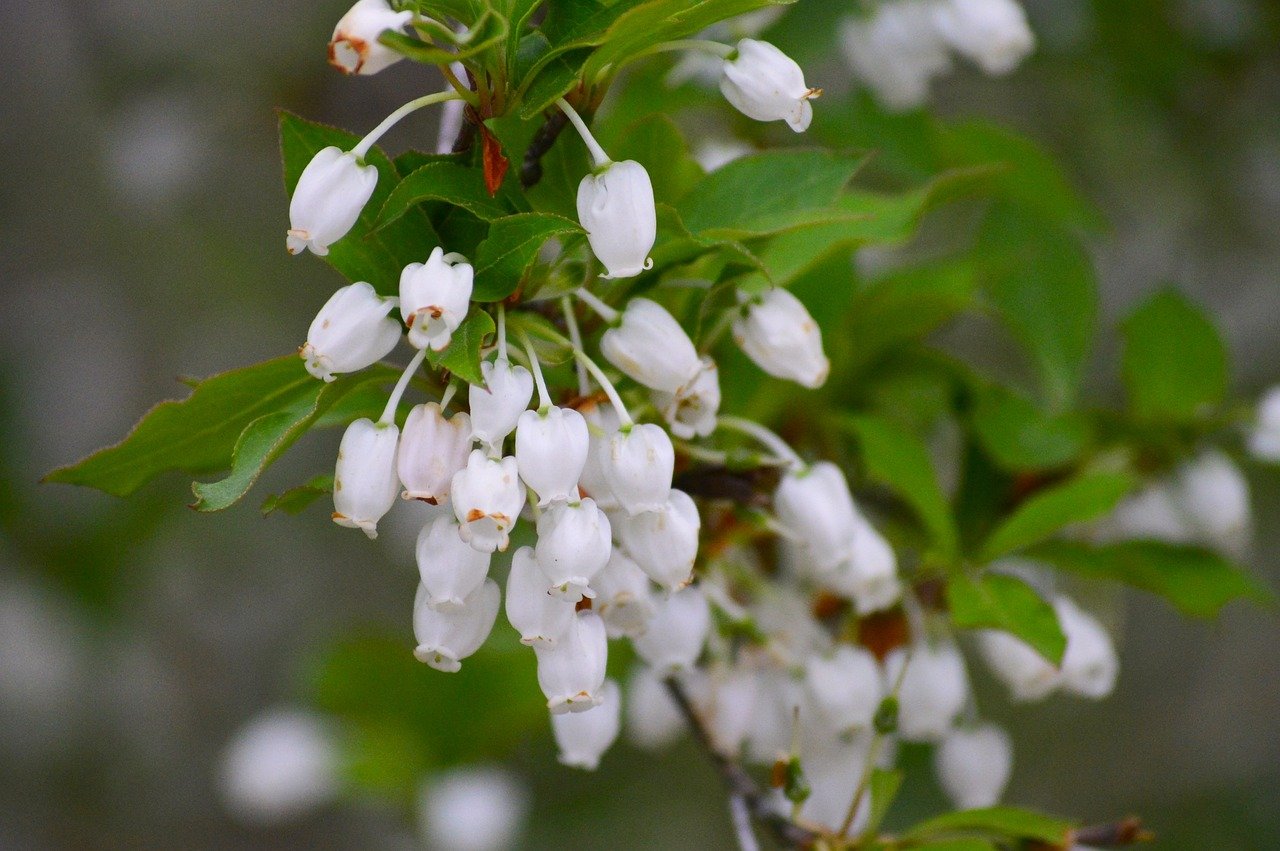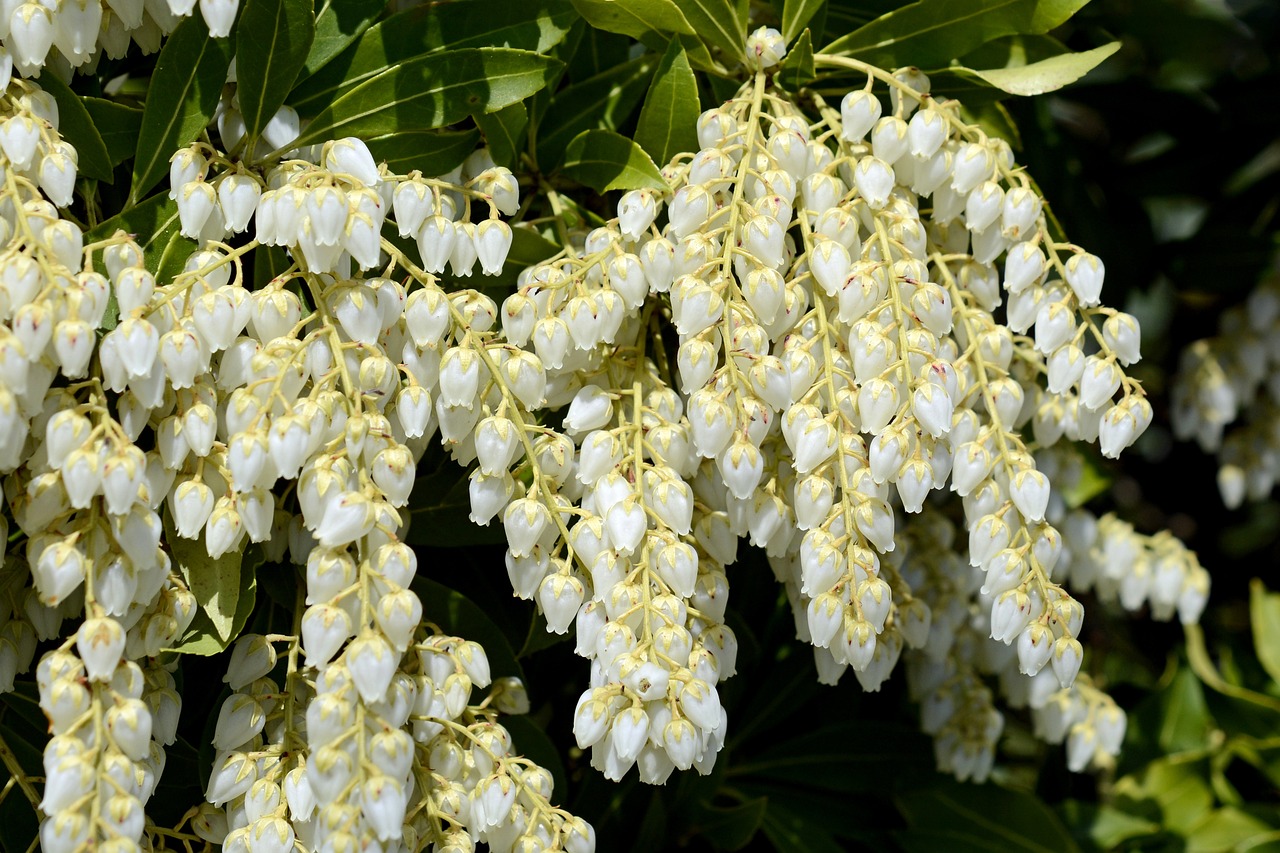Kalmia: Features and Care
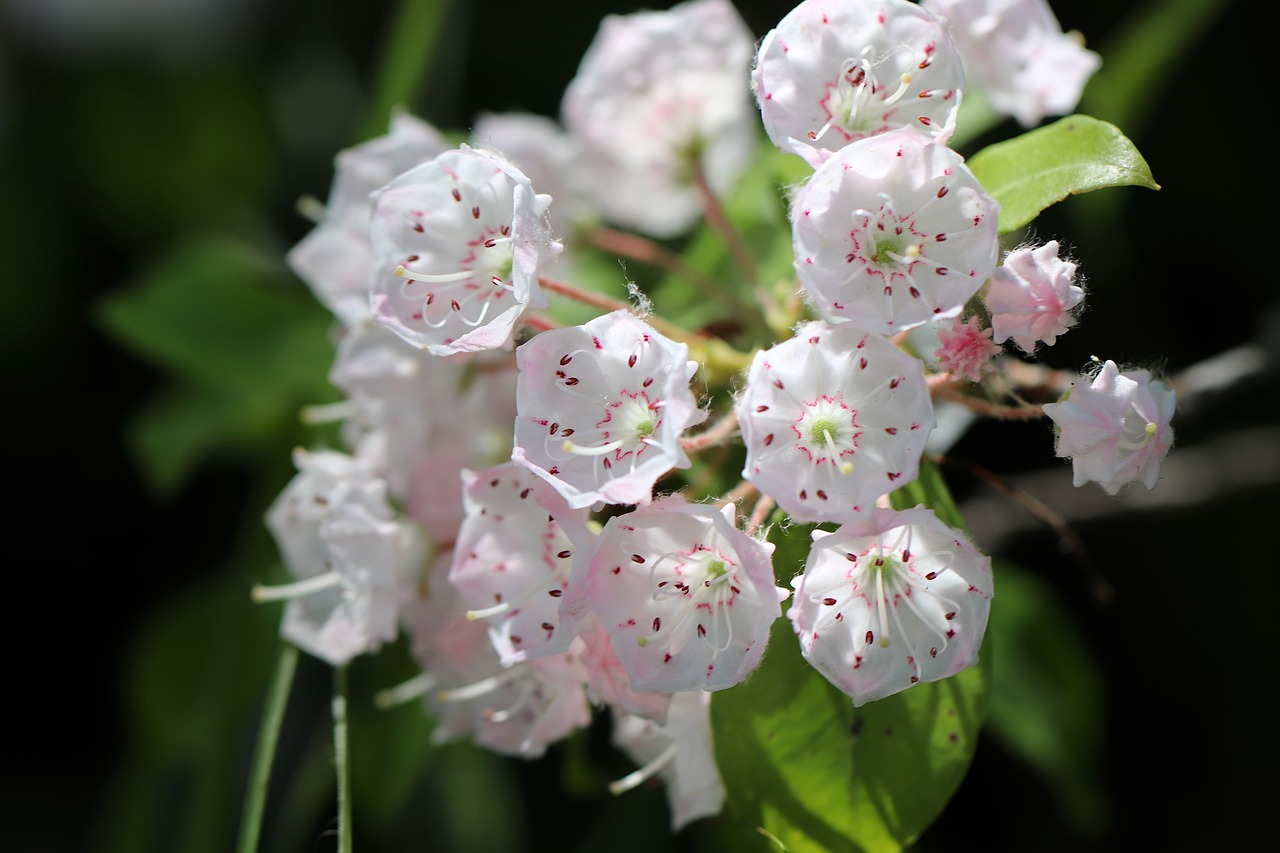
Kalmia, known for its uniquely shaped flowers and glossy leaves, is an evergreen shrub that adds charm to any garden or park. Often called “American Rhododendron,” its umbrella-like blossoms make it a popular ornamental plant.
This article provides detailed information about Kalmia’s basic characteristics, cultural significance, historical background, and gardening tips.
Basic Information
- Scientific Name: Kalmia latifolia
- Family: Ericaceae (Heath Family)
- Origin: Eastern North America
- Appearance: Kalmia grows to a height of 1 to 3 meters. Its flowers, often in pale pink, white, or purple hues, are star-shaped and strikingly beautiful. When grown in clusters, it creates a spectacular visual effect. The leaves are deep green and glossy, maintaining their appeal throughout the year.
- Blooming Period: Kalmia flowers bloom from May to June.
Cultural Significance Around the World
Kalmia, also known as “Mountain Laurel,” holds great cultural significance in North America. It serves as the state flower for Pennsylvania and Connecticut, symbolizing these regions.
In landscape design, Kalmia is a preferred choice for creating dramatic garden displays in Western-style landscapes. Its beauty also makes it a favorite for special events and decorative purposes, highlighting its ornamental value.
Historical Episodes
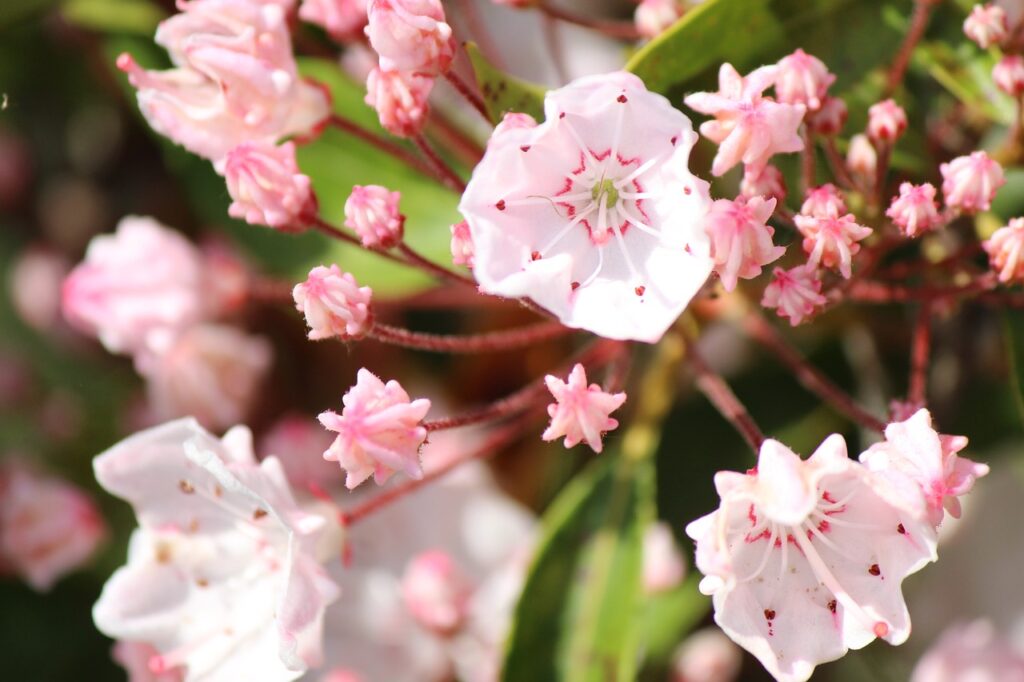
Kalmia was introduced to Europe in the 18th century and quickly gained recognition as an ornamental plant. The genus is named after Swedish botanist Pehr Kalm, who collected plants in North America and introduced them to Europe.
Its unique flower shape and vibrant colors made it a prized addition to the gardens of the aristocracy and wealthy during this era. Today, Kalmia continues to be showcased in botanical gardens across America and Europe, cherished for its historical and botanical significance.
Gardening Advice
With proper care and the right environment, Kalmia can thrive and maintain its stunning appearance for many years. Below are some key points for cultivation:
Sunlight
Prefers partial shade to bright, indirect light. Avoid excessive direct sunlight to prevent leaf scorch.
Watering
Water moderately when the topsoil dries out. Be cautious of overwatering to avoid root rot.
Soil
Thrives in well-drained, acidic soil. Using soil formulated for blueberries or rhododendrons works well.
Fertilizer
Apply slow-release fertilizer in early spring to enhance flowering. Avoid over-fertilizing.
Pruning
Remove spent flowers and dead branches to encourage new growth. Pruning immediately after flowering is ideal.
Conclusion
Kalmia is a captivating evergreen shrub with star-shaped flowers and glossy foliage that brighten any garden. Its history dates back to the 18th century when it was introduced to Europe and admired by both botanists and aristocrats.
Requiring partial shade, acidic soil, and moderate care, Kalmia is an excellent choice for gardeners of all levels. Add this beautiful plant to your garden and enjoy its charm throughout the seasons!
